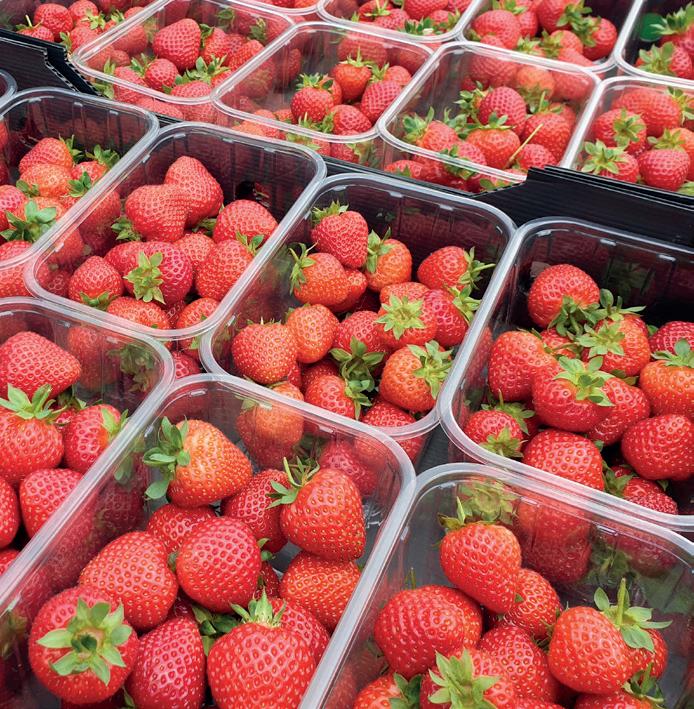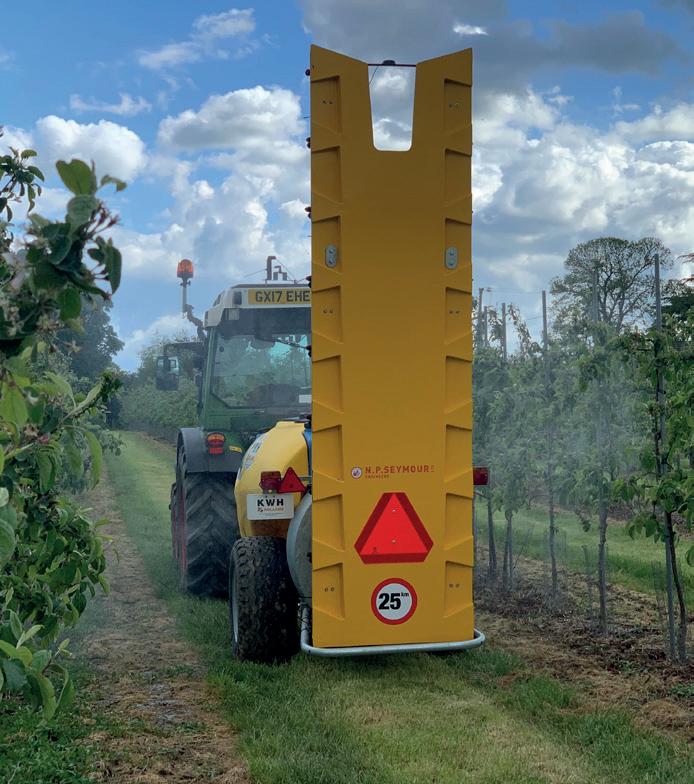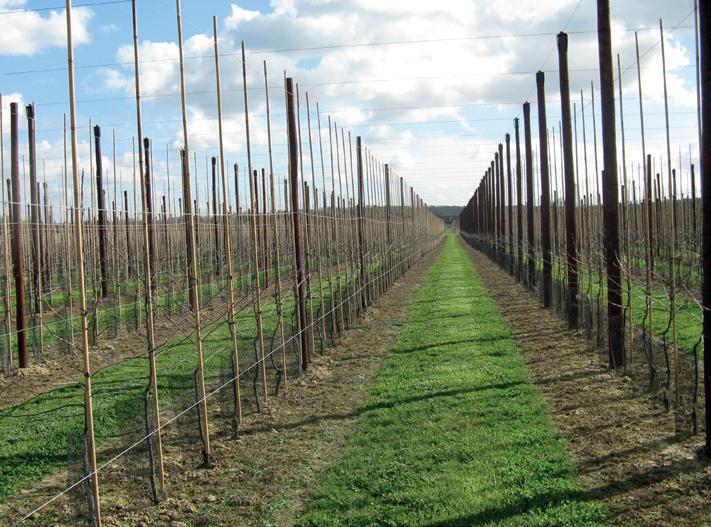
2 minute read
An exciting new beginning for NIAB’s plum demonstration centre
The Plum Demonstration Centre (PDC) at East Malling has been evolving since the first tree was planted in 2016. Originally created to showcase best practice in plum production (Figure 1) in an Innovate UK project to reinvigorate the UK industry, the Centre was funded by the AHDB between 2019 and 2022, but with the demise of the horticultural levy body, a new funding mechanism had to be found.
Early in 2022, the team at East Malling convened a meeting with plum growers and marketing groups, who collectively offered to fund the day-to-day management of the Centre, whilst allowing NIAB to seek additional research funding on topics of most interest to the plum industry.
Advertisement
Until 2022, the focus had centred on a comparison of rootstocks and rootstock/training system combinations. To date, the Oblique spindle, Super spindle and Narrow A frame systems on VVA1 and Wavit rootstocks have produced the highest yields, although firm conclusions can’t be drawn on the optimum combinations until more data is collected. Other work has included a comparison of yield and quality from tunnel-covered areas of plums with an uncovered area, a demonstration of the effect of mechanical weed control, as well as incorporating the results from AHDB funded and other tree fruit research projects.
The new funding consortium consists of eleven plum growing businesses and three marketing groups, who have taken a ‘handson’ approach to the management of the Centre, providing help and support with some of the husbandry tasks undertaken there. They are particularly interested to improve their knowledge and understanding of precision irrigation and fertigation in plums and to optimise nitrogen inputs, topics which are becoming increasingly important as the availability of water becomes ever scarcer, and the cost of fertiliser products continues to increase.
In 2022, scientists at East Malling installed soil matric potential sensors at 15 cm, 30 cm and 45 cm depth and a volumetric moisture content sensor at 45 cm under representative trees. Irrigation (and fertigation) was initially triggered at an average soil matric potential value of -60 kPa across the rooting zone. This irrigation threshold was then lowered gradually throughout the season to a value of -100 KPa. Prior to harvest, some trees were allowed to dry down to below -400 kPa and were then rapidly returned to field capacity to try to simulate the effects of a heavy rain event on fruit splitting before harvest. This work will help us to better understand the demand for water and fertilisers by plums at different stages during crop development, and to identify the optimum soil moisture deficit at which to irrigate – work that has already been done at East Malling on other tree and soft fruit crops.
The science team managing the Centre has also been comparing water availability in trees managed with mown grass alleys versus those with freely growing wildflower strips. We have been trying to understand if wildflower strips, which are used to host the natural control predators of insect pests, have any adverse effects on soil resource acquisition, tree growth, and fruit yield and quality. Growth control is also of great interest and both the timing of tree pruning and use of root pruning are included in the ongoing investigations.
2022 not only brought a new approach to the funding and management of the Plum Demonstration Centre, it also saw the naming and release of ‘Malling™ Elizabeth’, which was heralded on the NIAB stand at Fruit Focus. This new plum variety offers growers and consumers a high quality Victorialike plum, which produces attractive large, firm red/purple fruits, with excellent flavour and, perhaps most importantly, a very early season, cropping before Opal and some 6-7 weeks earlier than Victoria. We have high hopes for the commercial success of Malling™ Elizabeth.









